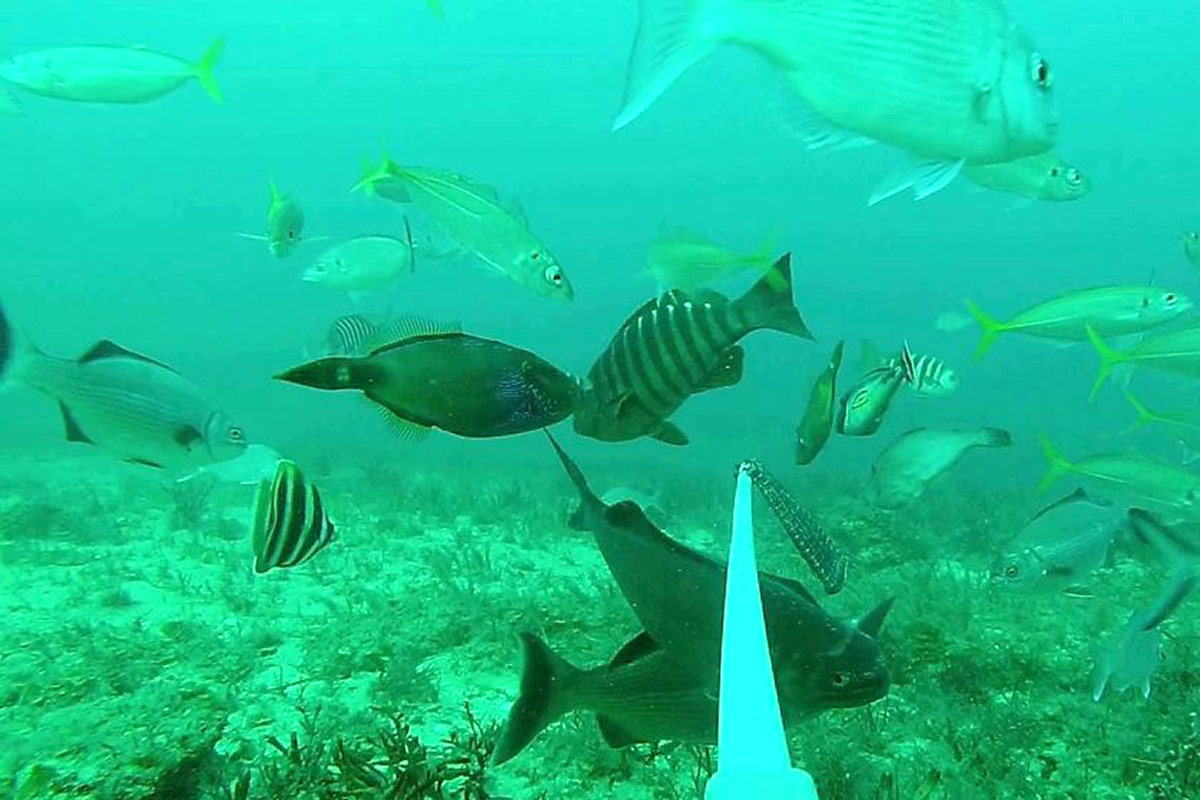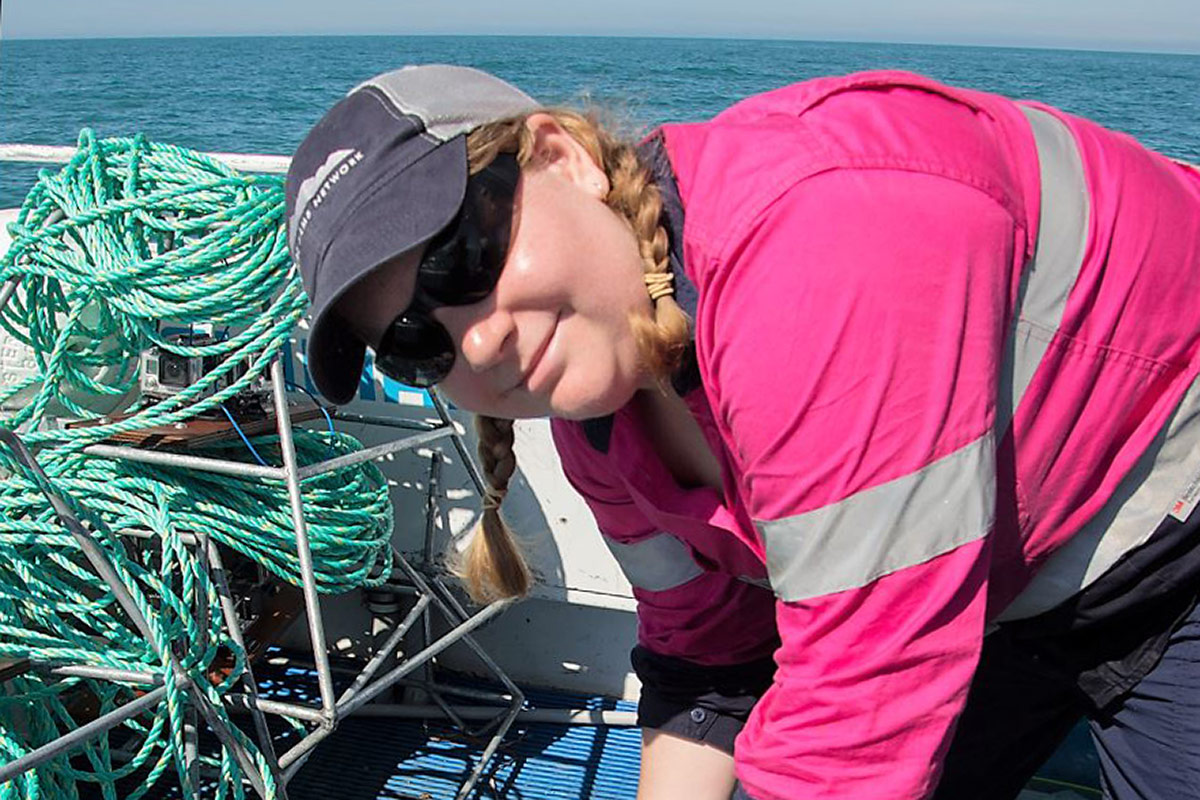
Accurately recording the number and diversity of species in marine parks or commercial fisheries helps with monitoring and management of important Australian habitats.
With that in mind, Flinders University biological sciences researcher Sasha Whitmarsh put new technology into practice as part of her PhD project, which is investigating the various ways human activities influence fish assemblages in local Adelaide coastal areas and the nearby Gulf St Vincent.
She expanded on the standard single-camera Baited Remote Underwater Video Station (BRUVS) setup with a multiple Go-Pro configuration to capture even the ‘shy’ species which stay at the rear while other species swarm for the bait in front of the main camera.
“We showed that the 360° field of vision captured the previously unknown activity to the back and sides of the bait, giving us a better idea of abundance and diversity of species at the site,” says Ms Whitmarsh.
“The single camera also was not able to accurately count all the fish converging on the bait because many were obscured in the crowded space.
“The extra cameras allowed us to count more of these individuals giving us better abundance estimates”
In a new paper in Royal Society Open Science, entitled ‘What are we missing? Advantages of more than one viewpoint to estimate fish assemblages using baited video,’ Ms Whitmarsh says the use of underwater videos is growing and capitalising on this and other trends in technology is important to understand marine life and the effects of human activities on our aquatic environment and ecosystems.

‘What are we missing? Advantages of more than one viewpoint to estimate fish assemblages using baited video’ (Royal Society Open Science), assesses the use of underwater video monitoring which is a standard tool to quantify fish assemblages and assess human impacts on aquatic ecosystems.
“Such methods can, however, have biases as it typically uses one viewpoint only,” Sasha says.
“Our study tested a novel design and assessed whether 360° views can enhance observations of fish communities.
“We found that 360° views can alleviate biases due to screen saturation from large schools and that shy species are more likely to be sighted when using additional viewpoints.
“Our study provides scientists and managers with a new design that improves the information that can be obtained from underwater video stations.”
Last year, Ms Whitmarsh published a related paper ‘What is Big BRUVver up to? Methods and uses of baited underwater video’, in Reviews in Fish Biology and Fisheries, also co-written by her research supervisors from Flinders University Professor Peter Fairweather and Associate Professor Charlie Huveneers.

